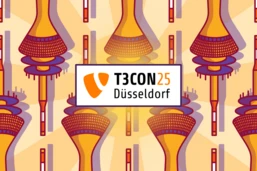Choosing a User Flow Tool
A Comprehensive Guide with b13

In digital design, picking the right user flow tool isn’t just about choice; it’s about navigating challenges like integration issues, team collaboration, and budget constraints. With a sea of options, how do you find one that addresses all these considerations? This guide simplifies and demystifies the process, ensuring you make a decision that truly fits your needs.
Understanding User Flow Tools and Their Role in UX Design
User flow tools are integral in the UX design process. They assist designers in mapping out the user’s journey within a product, beginning from the point of entry to the final objective.
Designers once had to rely on manual methods, but today's tools have revolutionized the process. User flow tools now allow designers to map out a vast, sometimes overwhelming, number of user flows, something that would have been nearly impossible or incredibly time-consuming by hand. By eliminating guesswork, they ensure a more predictable and satisfying user engagement.
The Gap in Current Content: Choosing the Right Tool
There’s no shortage of content on the nuances of UX design, but when it comes to selecting the best user flow tool, there's a clear void. At b13, we understand that the tool you choose can significantly influence the effectiveness and efficiency of your design process, and we’re here to help you navigate this choice confidently.
Identifying Your Needs: The First Step in Choosing a User Flow Tool
Selection begins with self-awareness. Before getting overwhelmed with options, spend time assessing your needs and identifying your design process.
Assess project complexity, team needs, and budget
- Project complexity: Tools with robust features like analytics integration and advanced prototyping work well for complex projects. Simple tools can suffice for smaller-scale implementations.
- collaboration needs: Some tools like Miro make it possible to do real-time remote collaboration across multiple locations. FigJam also allows real-time collaboration and team members can work on a flowchart at the same time.
- Team size: For small teams or solo designers, Figjam offers user-friendly interfaces and essential collaboration tools. In contrast, larger teams requiring advanced collaborative functionalities and integration should lean towards platforms like Miro.
- Budget: Marry project scope to cost. Simple user flows can use free tools, while advanced functionality may require financial investment. Some tools cap project or file counts in their pricing tiers. Companies with moderate needs might manage effectively on free or lower-cost plans.
Recognize your preferred design process
Your workflow—be it agile, waterfall, or a combination—can guide your choice, as different tools cater to different processes.
- Waterfall vs. agile: Agile-focused tools like Miro emphasize rapid experimentation and changes. More structured tools like OmniGraffle may suit waterfall approaches better.
- Level of fidelity: Some tools are optimized for wireframing and low-fidelity flows. Others like ProtoPie cater more to high-fidelity interactive prototyping
Features and Functionality: A Closer Look Into the Perfect User Flow Tool For You
By zeroing in on features and functionality tailored to your needs, you can find the ideal fit for your project. It’s essential to evaluate both current requirements and future scalability to ensure the tool remains valuable throughout your design journey.
Collaboration:
- A tool should allow multiple team members to work on and edit flows together in real-time, like Google Docs. This is useful for getting alignment and feedback from stakeholders. This interactive element is paramount for gathering feedback, ensuring alignment, and facilitating input from individuals external to the design team, like client stakeholders and management.
Prototyping:
- Interactive clickable prototypes bring flows to life and make them usable with clickable hotspot prototyping. These allow you to gather feedback on a realistic user experience.
- Pre-built templates or elements you can customize can save time compared to building everything from scratch.
Organization:
- Linking flows into an overall workflow can help you see the bigger picture and map complex user journeys.
- Tag and filter flows can keep a large library organized. This is important for managing many flows across different products, features, or teams.
Design and development handoff:
- It is important to have the ability to export flows as images, PDFs, etc., to share with others who don't have access to the tool.
- Integration with design tools brings in designs from Figma, Sketch, and other similar platforms and keeps flows connected to the broader design system.
- The smooth export of flows and requirements to engineering teams is important. This helps developers understand and implement the desired user experience.
Analytics integration:
- Connecting user flows with analytics platforms helps you see where users drop off in the product experience. This helps prioritize fixes and improvements.
Ease of Use and Pricing: Key Factors in Your Decision
For owners of small or medium-sized businesses, the tool should offer value for money:
- Intuitive interface: A tool that’s easy to navigate saves time and reduces the learning curve. This means your team can get up and running swiftly, which in turn maximizes productivity.
- Robust customer support: Even the most intuitive tools may have occasional glitches. Efficient support can be invaluable, ensuring any issues are addressed promptly.
- Cost justification for growing teams: Especially for enterprise organizations with extensive UX design teams, the price point — whether it’s a cost per designer or a seat license fee — needs to offer tangible value. The tool’s benefits and features should warrant its investment, ensuring a justified ROI for the enterprise.
Leveraging Reviews, Recommendations, and Trials in Your Decision
There’s a myriad of tools and services out there, and we know it can be overwhelming to determine which is the best for your specific needs. Reviews and recommendations can come to the rescue.
- Leverage the power of user reviews and recommendations: Lean on reviews and recommendations to gauge ease of use and suitability for specific needs. The catch is that you have to know how to sift through reviews. For example, fake reviews might swing to extreme ends — either too positive or too negative. Look for verified purchases, examine reviewer histories, seek detailed feedback, use review checkers like Fakespot, trust your instincts, and consult multiple sources, including those you trust in the design field.
- Make the most of free trials: Take advantage of free trials to test drive tools using real projects before committing. Ensure they support your workflow and processes, and can keep up with your paces. Don’t forget to mark your calendar just before the platform charges your company’s card!
A Rundown of User Flow Tools
FigJam:
FigJam is known for its real-time collaboration capabilities and seamlessly integrates with Figma. We recommend it for its user-friendly interface and collaboration features.
Figma:
Figma is a versatile design tool that offers prototyping, wireframing, and real-time collaboration, with free plans suitable for individuals and small teams. Its integration capabilities make it a favorite among many designers. Find out more about Figma and how we use it.
Miro:
Miro is a visual collaboration platform favored for its extensive template collection and the ability to integrate with tools like Jira, Slack, and Google Drive. We listed the things we love about Miro in this blogpost.
MURAL:
MURAL is a tool that emphasizes collaboration and visual planning, making it a fitting choice for larger enterprises. It provides a digital workspace for innovation and analysis, streamlining team efforts.
Whimsical:
Whimsical is a visual workspace tool designed for creating flowcharts, wireframes, and more, offering free plans for individuals and smaller teams. It combines simplicity with robust functionality, aiding in efficient design work.
ProtoPie:
ProtoPie stands out for its focus on high-fidelity interactive prototyping, allowing designers to craft complex interactions. It bridges the gap between designers and developers, ensuring smoother design transitions.
OmniGraffle:
OmniGraffle is a structured tool tailored for creating precise graphics like website wireframes and flowcharts, potentially aligning well with waterfall approaches. It's preferred by designers aiming for precision and detail.
Google Docs:
Google Docs is a widely-used platform for document creation, editing, and real-time collaboration. It serves as a benchmark in the digital collaboration space, simplifying team communication and content creation.
Sketch:
Sketch is a design toolkit built to assist designers from ideation to final artwork. Its interface and features have made it a staple in many design workflows, offering integrations with other design tools.
Each of these tools brings a unique set of features and capabilities to the table, catering to different aspects of the design process. Our recommendations offer additional insight into their practical applications in the UX design field.
Conclusion: The Best Tool is the One You’ve Tried and Tested
Choosing the right user flow tool is an essential decision for any design team, and with a vast array of options available, it can seem daunting. Your selection can make the difference between a streamlined design process and one fraught with challenges.
As we’ve laid out in this comprehensive guide, factors such as team size, project complexity, budget, and specific features all come into play when making your choice. Listening to experts and leveraging user reviews and recommendations can offer valuable insights.
But, ultimately, the best way to ensure a tool is right for you is to test it in a real-world setting, taking advantage of free trials where available. No single tool will be universally perfect; the key is finding the one that best aligns with your team’s unique needs and workflow.
Interested in learning more?
If you’re interested in learning more about user flow tools and the greater ecosystem of user design, head to b13 blog for more insights from our experts!
FAQ
What is a user flow tool?
A user flow tool is a digital application that helps designers and developers map out the journey a user takes within a product or website, from entry to conversion or other desired actions.
Why is choosing the right user flow tool important?
The right tool can streamline the design process, ensure consistent user experience, and foster collaboration among team members. Get it right, and your product’s user journey becomes intuitive and effective.
What factors should I consider when choosing a user flow tool?
Consider the tool’s functionality, integrations, ease of use, scalability, and pricing.
How do the needs of my team affect the choice of a user flow tool?
Your team's size, expertise, preferred design methods, and collaboration needs can all influence which tool is best. For instance, larger teams might prioritize collaborative features.
What kind of features should I look for in a user flow tool?
Search for features like drag-and-drop interfaces, collaboration capabilities, integration with design and testing tools, and the ability to export or share user flows.
Why is ease of use important in a user flow tool?
A user-friendly tool reduces the learning curve, speeding up design processes and ensuring everyone on the team can effectively contribute.
How does pricing vary among different user flow tools?
Pricing can range from free (with limited features) to premium monthly or annual subscriptions. Some tools also offer enterprise pricing based on team size.
How can I use reviews and recommendations to choose a user flow tool?
Reviews give insights into actual user experiences, helping you identify potential pros and cons. Recommendations, especially from peers or industry experts, can highlight tools that have proven effective in similar scenarios.
What should I look for during a free trial period of a user flow tool?
Assess the tool’s functionality, integration capabilities, speed, and how well it suits your team's workflow. Also, note the quality of customer support.
What are some examples of user flow tools that I could consider?
Popular choices include Flowmap, Lucidchart, Microsoft Visio, Miro, Figma (with user flow plugins/FigJam), and Adobe XD. Remember to choose the one that aligns best with your specific needs!
